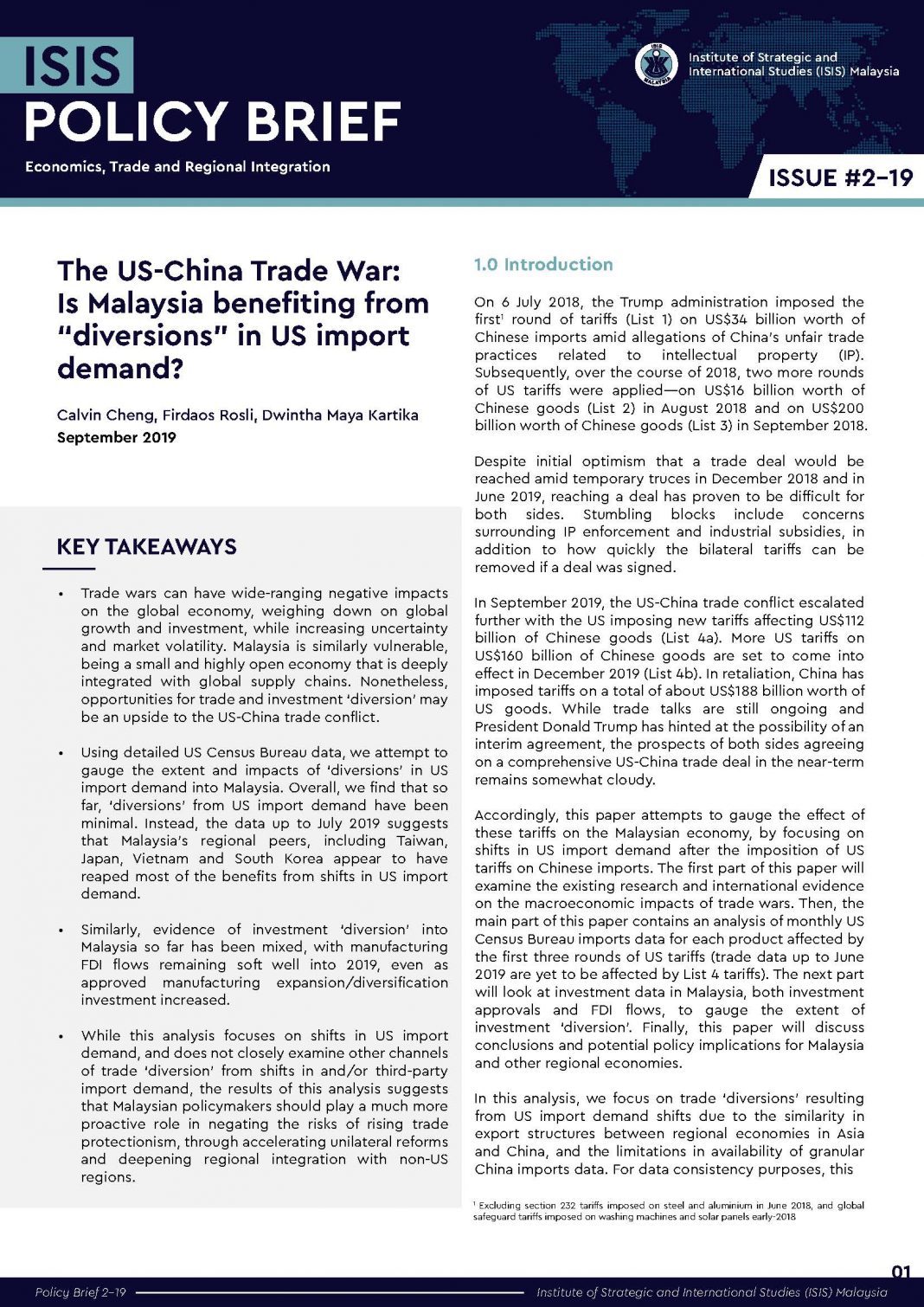On 6 July 2018, the Trump administration imposed thefirst1 round of tariffs (List 1) on US$34 billion worth of Chinese imports amid allegations of China’s unfair trade practices related to intellectual property (IP). Subsequently, over the course of 2018, two more rounds of US tariffs were applied—on US$16 billion worth of Chinese goods (List 2) in August 2018 and on US$200 billion worth of Chinese goods (List 3) in September 2018.
ISIS Malaysia engages actively in Track Two diplomacy, and promotes the exchange of views and opinions at both the national and international levels.
Contact us: info@isis.org.my
© Copyright 2024. ISIS Malaysia (99856-H) All rights reserved.





